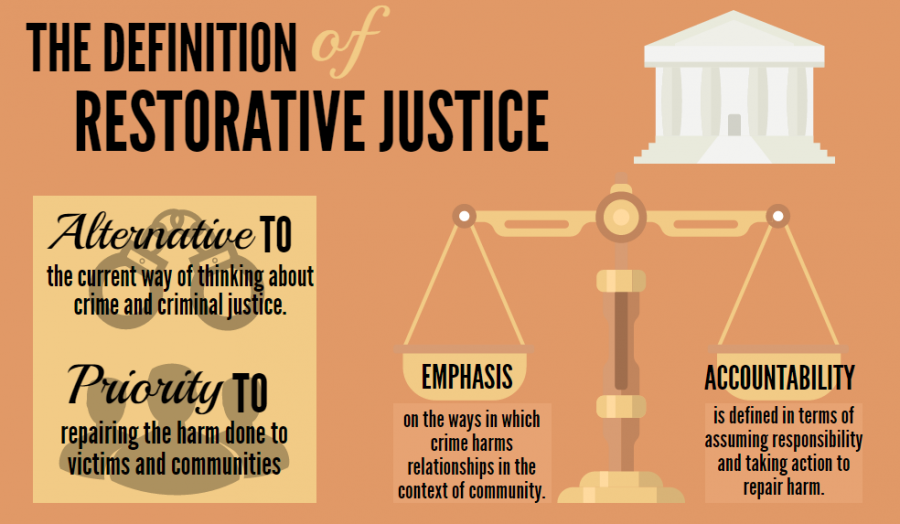Teen Court: students involved in the judicial process
February 15, 2017
As the 14-year-old boy approaches the judge’s stand, his head remains low, avoiding the courtroom’s heavy stares. Twelve high school volunteers raise their right hand and turn to the boy, solemnly promising to be fair in their duties. As the trial begins, the jurors listen tentatively to the boy’s trembling voice as he recalls the day he brought brass knuckles and knives to school. Silence settles between questions, suddenly broken by a mother’s tears. The boy apologizes for the trouble he’s caused, and the jurors are dismissed to determine his sentence. This is one of numerous cases the jurors will rule on this day.
Every other Wednesday in Maryland’s Teen Court program at the Rockville Circuit Court of Appeals, MCPS high schoolers, including some Whitman students, volunteer to serve on juries to assess their peers. Student volunteers may also act as court clerks to help the judge overseeing the trial. The defendants, referred to as respondents, are students who have accepted responsibility for a crime and are awaiting their disposition, or sentence.
The police and Department of Juvenile Services decide how to handle juvenile offenders. Among other alternative programs, juveniles may be sent to the Teen Court.
Approximately seven Whitman students have served as jurors and cite Teen Court’s importance in providing the opportunity to participate in an important judicial process and make a difference in a teen’s life.
“Sometimes it is hard because you could see yourself in similar situations, or you know they aren’t really bad kids—they just had bad luck,” senior Justin Pollack said. “But it is good to know that rather than just getting locked up, they are given another chance.”
Since the majority of the cases in Teen Court are first offenses and typically minor crimes like possession of alcohol, drugs or weapons or shoplifting, high schoolers may be more inclined to understand the respondent’s actions, and thus lessen the severity of the punishment.
For many jurors, it’s difficult to witness their peers in such difficult situations, especially when considering the effects on the students and their families.
The jury sat satisfied, knowing they had just helped someone so similar to themselves turn his life around.
“It’s sobering to think that these are people like me, who made one bad decision and are now here: that their parents, siblings, and relatives had to be told that their child or sibling or relative had been arrested and would be appearing in court,” junior Emmett Ryan said. “Respondents are teenagers like me who are only separated by which chair they’re sitting in. In another universe, I could have been on that stand.”
Teen Court is also beneficial for the respondents, who have been given a chance for redemption. The program encourages teens to improve their situations through community service hours, apology letters or creative assignments, without the daunting threat of a traditional juvenile delinquency system in which a judge would be responsible for their fate. While Teen Court judges are present to supervise trials, they aren’t involved in the respondent’s disposition. Nonetheless, judges ensure a serious environment inside the courtroom.
“I think there’s an intimidation factor, being in a courtroom that a few hours earlier may have been used for a case a lot more high profile, and now here you are sitting in the same courtroom on trial,” said Sergeant Nicholas Picerno of the Montgomery County Police Department, who also sits as a Teen Court judge. “Something as simple as having to humble yourself to write a letter to someone you may have victimized; it’s a hard, humbling experience and that’s the kind of thing that carries that personal bond that will cause someone to not commit the act again.”
So when the jury of the young boy who brought weapons to school, returned with a verdict, their faces glistened with hope that their decision may help the boy. Again, the boy’s head remained low as he crossed the floor under the heavy stares of the courtroom. One juror read off the boy’s verdict: 48 hours of community service and a letter to his mother.
For the first time, the boy raised his head and looked at his mother. Fighting tears, he quietly returned to his seat, but this time his head stood high with new hope for his future. The boy hugged his mother; a jury sat satisfied, knowing they had just helped someone so similar to themselves turn his life around.








